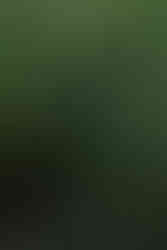STEVE BARRON - MARGENT FARM
- SSAW Collective
- Aug 19, 2021
- 2 min read
In 2015 my daughter had a daughter and it made me question what kind of world she was coming into. I was busy making films, creating an invisible window into the world of fantasy but what was the reality of our future on earth?

At first, I didn’t know where to start; The horrific plastics in the ocean? Our staggering soil health depletion? Carbon emissions warming the planet? Then a friend of mine, Fawnda Denham, told me to look into a magic crop called hemp which could help in the battle against all these dooms.

Just planting the crop can quickly sequestre tons of carbon from the atmosphere. Its long, deep roots help to decompact the soil and it acts as a strong break crop. The cellulose content within (60-70%) means it is a great natural alternative for many materials including a bio-plastic that can decompose, protecting our oceans. More recently millions of people have become aware of the nutritional value in the seeds, and it’s remarkable Cannabidiol (CBD) content that can be extracted from the leaves and flowers.

I decided to buy a 53 acre plot of land in Cambridgeshire, turn it into an organic, regenerative farm, plant some hemp and build a farmhouse out of it. We used the Fedora hemp strain which is grown for its fibre, using the inner shive to make a form of hempcrete, a mix with part lime to fill the sustainable wooden cassettes that form the walls of the house. Paloma Gormley at Practice Architecture designed the house keeping the original structure of the cowshed it was built on. The insulation, acoustics and clean breathability of the house feels like no other building I have experienced.

We now grow hemp principally for the hempseed to create a culinary oil and as base for our luxury CBD skin products that can be purchased at margentfarm.com. We use hemp baste fibre turned into soft mats as a base for the corrugated panels that clad the house and act as a rainscreen. Since we began the business the panels have turned from a deep chestnut brown to a pale toffee blonde. The original colour comes from the farm waste resin which is mixed with the soft hemp fibres so that under thermal compression the material can harden into strong boards. The bio-resin is made of Corn Cob, Oat hulls, Bagasse amongst other natural waste.

Image Credits Keymea Yazdanian
Our future plans are to continue to inspire the use of hemp as a great tool in the fight against our planet's suffering. We will continue to farm for good and to research, develop and innovate the many facets of the hemp plant.










Comments